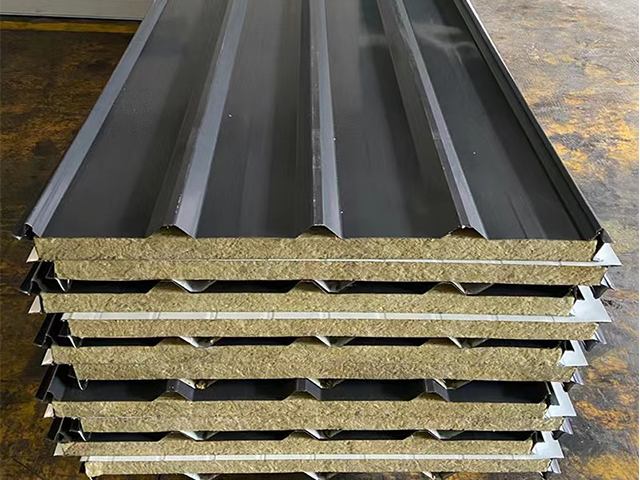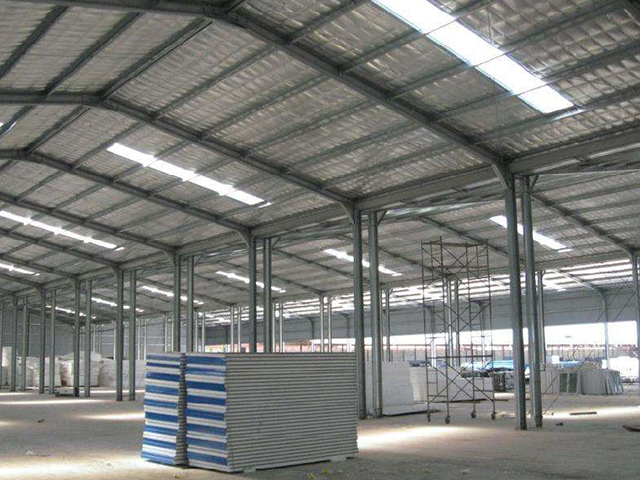Core Materials and Manufacturing Techniques in Sandwich Panels
EPS vs. PU vs. Rockwool: Choosing the Right Core
EPS (Expanded Polystyrene), PU (Polyurethane) and Rockwool are the three main sandwich panel core materials with different density, thermal insulation performance, and mechanical properties for all kinds of building. EPS is lightweight and has adequate insulation properties Eps is used for many applications such as exterior and interior trim applications. PU, which provides a better insulation because of its higher density; is usually used at projects with high requirement of energy conservation. As basalt rock are made of fiber, it has a greater fire resistance to the other raw materials used for heat insulation, and used widely to the place where need the device for fire prevention.
Concerning environmental performance, the recyclability is difficult with EPS and PU, and emissions are generated during the manufacture. But there are advances in the works to clean up their act. Rockwool is also the greener option, as it has the capacity for recycling and is less polluting during production. There are various cost effectiveness to these materials though; for example I believe EPS is the cheapest, but PU and Rockwool provide the better insulating value in the long run and are therefore more expensive! PU is the common recommendation by industry experts for an energy efficient prefab house, Rockwool is also often used for steel metal building because of its fire resistance capabilities.
Continuous vs. Discontinuous Production Lines
Continuous and Discontinuous production lines are ich ander cycling in the production of sandwichpanels important. "Continuous operations are a transition of nondisruptive, smooth producing to efficient and fast production. Discontinuous methods, on the other hand, make panels in unconnected batches, and can be more high-quality, specialized but slower. There are continuous lines for projects that need a lot, and need it quickly—prefab metal garages are a prime example—and there are discontinuous lines for builds, such as the modern prefab house, that are complex and fully customized.
The benefits of the continuous process are the shorter lead times and the lower labour costs, while discontinuous lines are characterized by higher mould accuracy and ease of shape change. Factories can make up to 5000 m of panels a day with a continuous process, compared to far less for a discontinuous one. Enterprises like Haiji Zhitong’s continuous line to remain competitive and to meet to the need of the market for fast dryin products. Despite its greater speed, the decision on production lines is a question of the application context, as efficiency and the need for customized sandwich panel solutions and profiles are to be balanced against each other.
Precision Engineering for Quality Assurance
Automated Production Line Controls
Machine controls are important in improving the accuracy and repeatably in sandwich panel production. Adopting some advanced technologies, such as robots and IoT devices, the operation in production will be efficient and with mistakes. This type of technology provides the ability to monitor in-process and make quality decisions on the fly, eliminating human error and improving precision engineering. Industry stats prove that automation can significantly enhance production figures, with product defect rates slashed by up to 30% and output efficiency boosted by 25%. As such, software applications are essential for real-time quality monitoring and control that provide insights and signals that help to secure production results.
Thermal and Structural Testing Protocols
Thermal and mechanical testing is necessary to assess desi gned adherence of the Sandwich bags with safety Instruction. These tests measure performance of the panels’ thermal performance and strength under their respective conditions. Common testing procedures, as for example measurement of thermal performance by a heat flux meter and structural performance by tensile testing equipment, exist for panel performance testing. Skimping on a heavy duty test can result in a safety hazard; in the construction industry, bad structural tests have lead to well-known and generally not nice recall. It’s important to be in line with current testing technologies, but it will also provide more accurate results for the quality of panels and improve safety standards compliance.
Applications in Modern Prefab Construction
Steel Metal Buildings for Industrial Use
Steel metal buildings are the building of choice for a variety of industrial applications, including their energy efficiency and load capabilities. Sandwich panels play a role as elements that increase efficiency and contribute to the strength of the structure and the quality of aesthetic properties. Case studies illustrate the physical properties of industrial buildings using sandwich panel systems well and underscore trends which are leading to increased sustainability and efficiency in construction. For example sandwich panels allow construction of facades which meet the most stringent of current standards, while integrated methods of construction permit a decrease in operating expenses over time. The surge in demand of prefab steel metal buildings in the market sector is borne out by industry figures which indicate a growing inclination towards these new-age methods of construction owing to their long-term sustainability.
Prefab House Kits: Speed and Efficiency
Surprisingly few of them, however, make use of sandwich panels—one has even embraced stylish shipping containers!There are those that prefer a simple existence in the outskirts, and there are others who revel in the company of millions of people (or who knows?角棒s, like plants, need warmth to thrive, so they're usually in hothouses, and markings on some leaves suggest that too much heat from the bulbs is poaching the trees' delicate leaves. Notch border at centre, and each side of quill border, single strand of quills over quill work, width, l% in.; div. 2 c. 526. These packages allow for the most customization and the fastest build times available, for those who aren’t looking to take it on themselves. Numerous pioneering prefab house developments are testament to these advantages and are often built in a fraction of the time it would take a conventional project to go up. For instance, the speed and ease of construction with sandwich panels in prefab housing is shown by projects built in weeks (not months). Architects and builders details the ways in which sandwich panel technology streamlines construction, boosting both the stability and curb appeal of modern prefabricated homes.
Innovations in Sandwich Panel Technology
3D-Printed Lightweight Structures
The application of 3D printing for the manufacture of lightweight sandwich panels is a modified process. Such advanced technology provides better design freedom, for complex patterns and structural arrangements that were constraint in the past by conventional methods. 3D Printing thermoplastics and resins Materials, such as thermoplastics and resins offer enormous advantages in weight savings and performance. Newer studies have shown that weight can be reduced by as much as 10% when employing 3D printing, with better mechanical properties. Real applications, such as aerospace and automotive, prove that 3D-printed sandwich panels could be successfully applied to improve strength and performance of different structures.
Sustainable Materials for Eco-Friendly Buildings
There is a major driving force in the building industry for sustainable and recycled materials in the sandwich panel industry. This growing trend is in a bid to reduce the adverse effects of building constructions on the environment. Eco-friendly structures' carbon outputs are significantly lower and less costly to the environment in comparison with less sustainable structures. Novel materials, such as recycled PET and natural fibers, have also demonstrated comparable, if not better, performances than conventional materials. By the preferences of ThermHex, sustainable systems provide an essential input to the design of panels which besides sustainability purposes are high performance. The building industry is moving more towards these greener alternatives says CompositesWorld in a report, and this speaks of great progress towards environmental responsibility.






